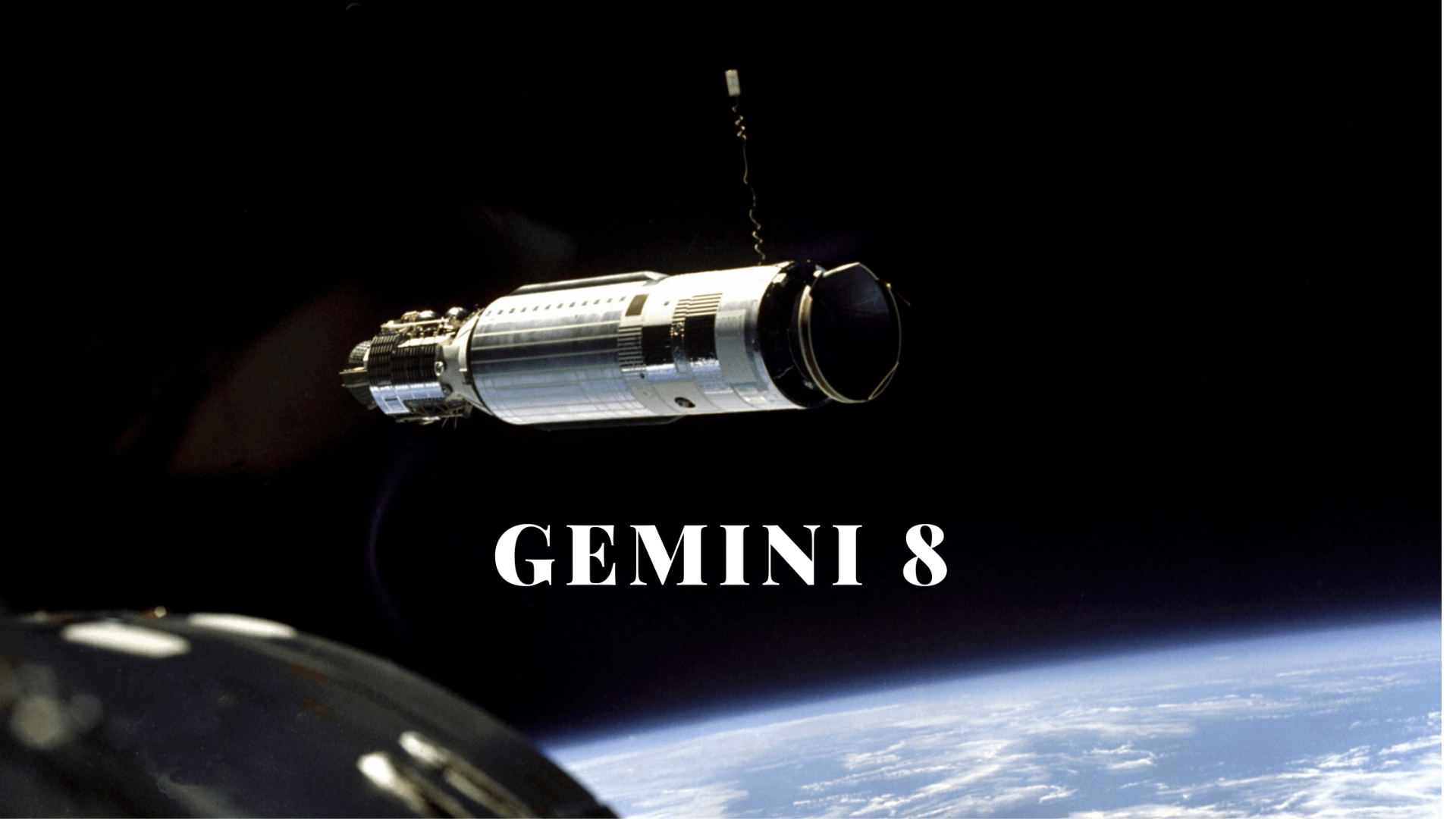
Gemini 8
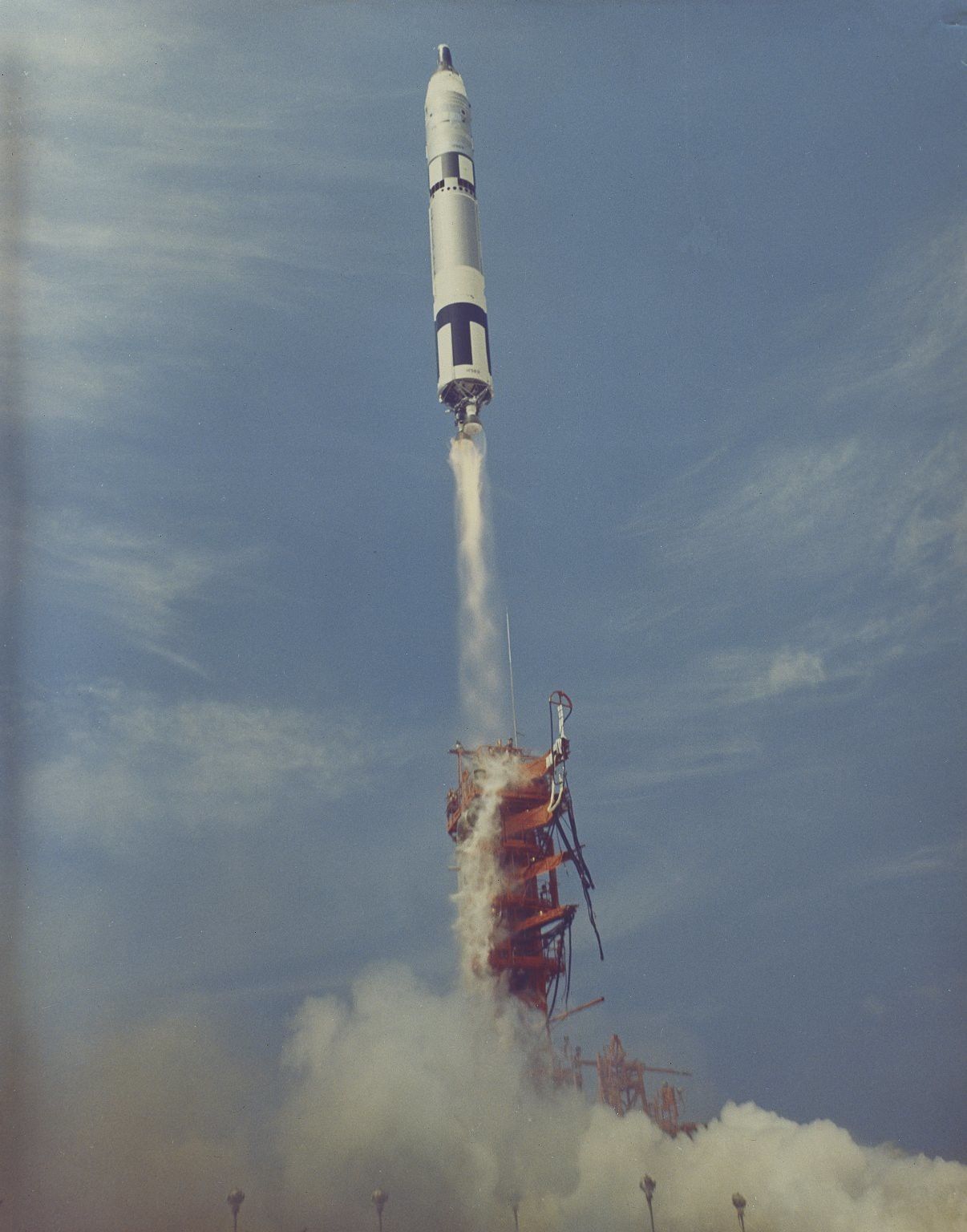
Gemini 8 was the sixth crewed spaceflight as part of NASA's Gemini program and the 12th crewed American spaceflight. Gemini 8 launched March 16, 1966, and saw the first docking of two spacecrafts in orbit. However, the mission suffered the first critical system failure of a U.S. spacecraft in space which threatened the astronauts' lives and required an immediate abort mission. The Gemini 8 crew was safely returned to Earth. The Gemini 8 crew consisted of Command pilot Neil Armstrong and Pilot David R. Scott. This flight marked the second time a U.S. civilian flew into space with Neil A. Armstrong and the first time a U.S. civilian flew into orbit.
Gemini 8 was scheduled as a three-day mission, wherein after launch, it was to rendezvous and dock with an Agena target vehicle on the fourth revolution. The Agena target vehicle had previously been launched into a circular orbit. This rendezvous was to be the first space docking in history, with four separate subsequent dockings planned.
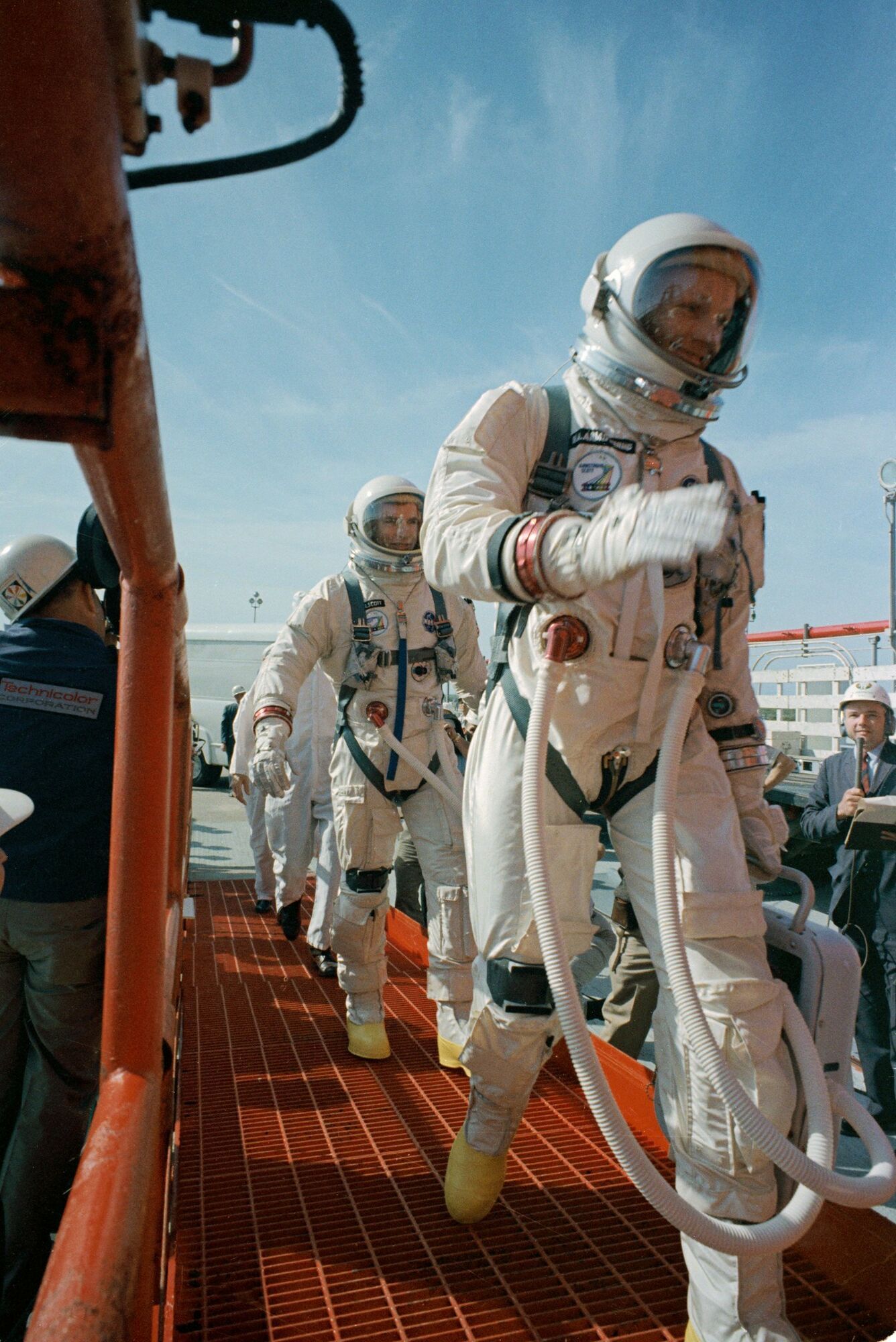
Pilot David Scott, during the first docking, had planned to carry out an ambitious extra-vehicular activity (EVA) that would take over two hours and would have been the first EVA since the June 1965 spacewalk done by Ed White during Gemini IV. Scott, during his EVA, would have retrieved a nuclear emulsion radiation experiment from the front of the Gemini's spacecraft adapter on a 25-foot (7.6 m) tether, then activated a micrometeoroid experiment on the Agena. He then would have moved back to the Gemini and tested a minimum-reaction power tool. After Armstrong undocked from the Agena during the EVA, Scott was to wear and test an Extra-Vehicular Support Pack (ESP) that was stored at the back of the spacecraft adapter. The ESP was a backpack with a self-contained oxygen supply, a 75-foot (23 m) extension to his tether, and extra Freon propellant for his Hand-Held Maneuvering Unit. Scott would practice several maneuvers in formation with the Gemini and Agena vehicles, in concert with Armstrong in the Gemini. However, Scott would never perform this EVA due to the flight's abort due to an emergency that occurred shortly after docking.
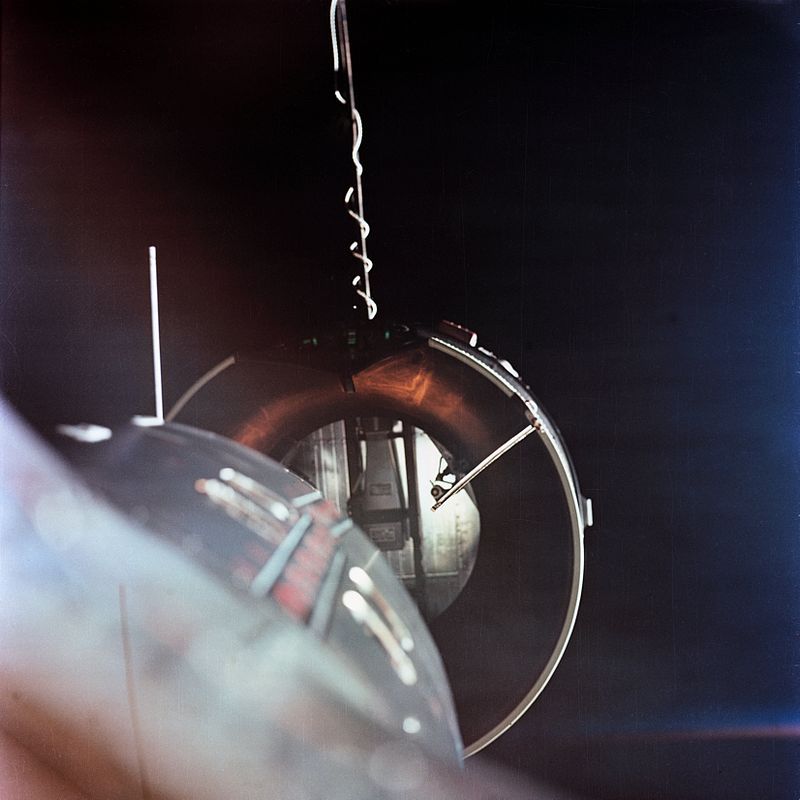
Armstrong then reported that the OAMS fuel had dropped to 30%, indicating that the problem could be with Gemini 8 instead of the Agena. The crew decided they would have to undock from the Agena in order to analyze the situation after concerns were raised, seeing as the high rate of rotation could damage one or both spacecrafts or cause the propellant-heavy Agena to rupture or explode. Ground command took back control of the Agena while Armstrong struggled to stabilize the combined vehicle to undock. Once he could stabilize it enough, Scott hit the undock button, and Armstrong fired the thrusters to back away. Without the added weight of the Agena, the Gemini spacecraft started rolling again.
The astronauts then realized that the problem was on the Gemini; the tumble rate reached 296 degrees per second after separation. Armstrong then shut down the OAMS and used the Reentry Control System (RCS) thrusters, which are located on the spacecraft's nose, to stop the rolling. Scott later praised Armstrong's actions and said he was lucky to be flying with Armstrong. The spacecraft then came back in range of a ground communications ship Coastal Sentry Quebec. After the spacecraft was steadied, the crew tested each OAMS thruster individually and found that Number 8 was malfunctioning. They also found that nearly 75% of the reentry fuel supply had been used to stop the tumble. Once the RCS was fired during a flight for any reason, mission rules dictate that the flight must be aborted. The crew prepared for an emergency landing.
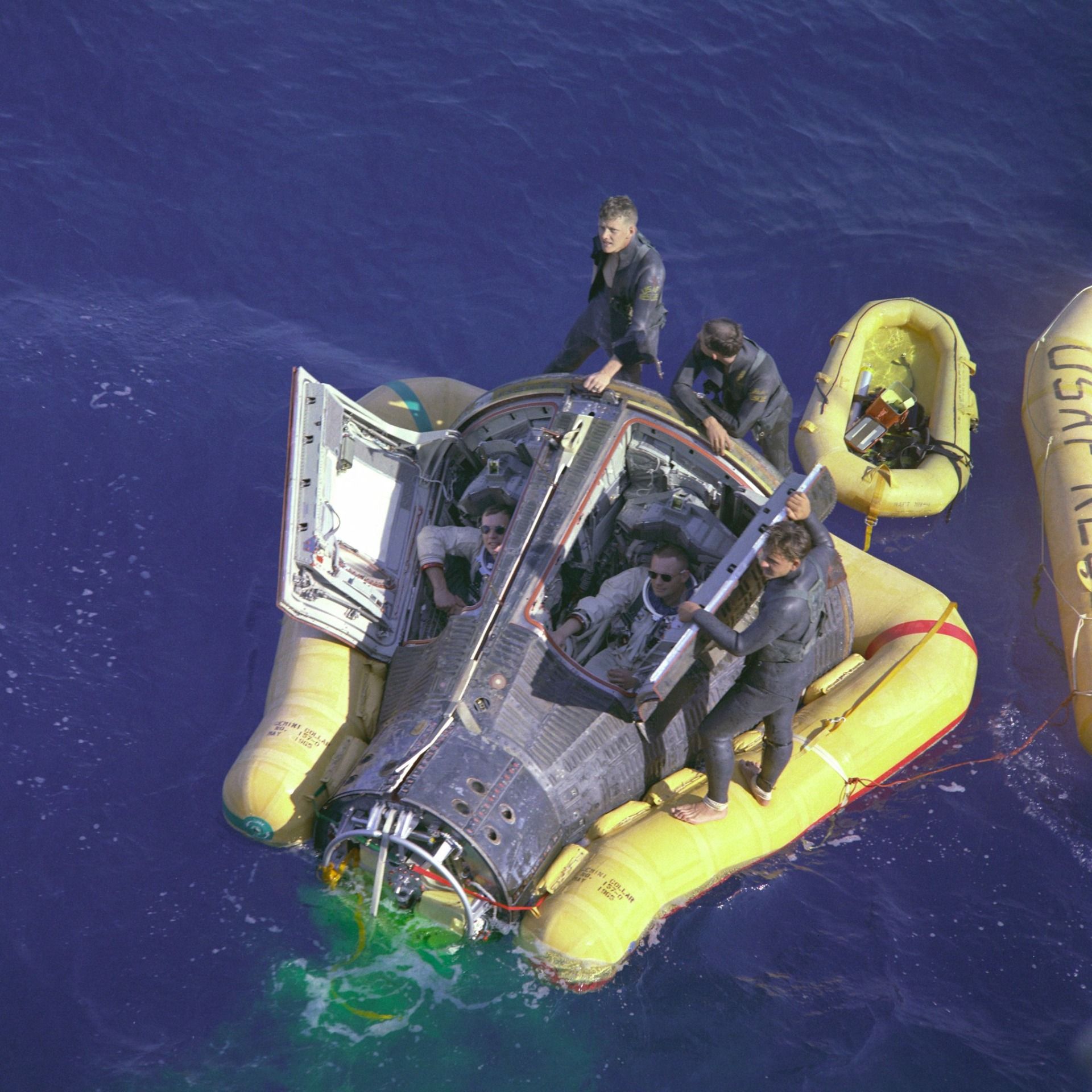
Both the Gemini 8 crew and spacecraft were on board the recovery ship just three hours after splashdown. The astronauts were exhausted but were otherwise in good condition. However, the astronauts and pararescuers suffered from seasickness. The crew were briefly checked and slept for nine hours. The following day, the ship docked at Naha. NASA officials, and fellow astronaut Walter Schirra, flew into Naha to greet the Gemini 8 crew before the astronauts were called back for medical testing and a debrief. After their release, the astronauts were brought to waiting helicopters by limousine and began their journey back to NASA headquarters in Florida.
There was no conclusive reason found for the thruster malfunction during Gemini 8. It was determined to most probably be caused by an electrical short, most likely due to a static discharge. Even when it was switched off, power still flowed to the thruster. To prevent this problem from recurring, spacecraft designs were changed so each thruster would have an isolated circuit.
